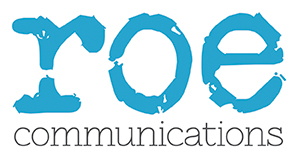So, you’ve decided that you want to generate press coverage for your business school.
Great!
Positive press coverage will bring benefits to your business school.
You will become more visible online, leading to increased enquiries and better rankings for your website. You will also have fresh content to share on social media and in your marketing campaigns.
All this can support lead generation amongst potential applicants, raise awareness amongst potential partners and funders, and improve your visibility within industry and the community.
But when you commit to PR, it’s important to start off on the right foot.
Being too hasty can result in disappointment and wasted effort:
- You could end up with a collection of press mentions in titles that your audience doesn’t consume.
- Or you send them straight to the delete button with stories that aren’t relevant to their area.
Getting it right takes a bit of effort to build solid foundations for your PR programme.
So how should you begin?
1. CLARITY on what you want to achieve
Like all other areas of marketing, there’s no point in starting a PR campaign unless you are clear about what you want the outcomes to be.
Before typing your first email to a reporter, ask yourself: “Why are we doing this?”
The type of things you might ask include:
1. What are your business school’s commercial objectives over the next 5-10 years? Ideally, these would be SMART objectives and could cover student recruitment, financial growth, staff retention, market share or innovation.
2. What are your vision and values?
3. Who are your target audiences (in order of priority)?
If you want to know whether your PR efforts are working, being clear on these things from the outset is essential.
2. FOCUS – on what you want to be known for
“We need to get more press releases out there.”
“We’re having an event next month; let’s invite some journalists.”
“Our professor has published a new research paper; let’s issue it to the media.”
Sound familiar?
These are all conversations we have heard within business schools.
The problem is that hopping from one thing to the next won’t help you differentiate your school in a competitive market.
We are not saying that these are not important. Of course, you want your research to be recognised. You want to fill programmes. And your academic calendar will dictate student activities.
But they should only become part of your PR programme if they support your chosen narrative (and pass the news test – see point 3).
Be clear on the areas of expertise your school wants to be known for – and stick to them.
It might mean saying “no” to colleagues who want you to support their stories.
But any short-term discomfort will be outweighed by longer-term gain.
3. A METHOD for assessing PR stories
When you have agreed on your desired outcomes, you need to think about how to assess stories for the press.
Journalists are busy and under pressure – they only have a few seconds to assess whether your story will make the grade.
You might have heard about the key components of a news story: who, what, why, where, when and how.
But with so many organisations fighting for journalists’ attention, you need to go beyond this. Here’s our 7-step news test for assessing stories:
- What is new and different about this story?
- How is this relevant to a journalist’s readers?
- Why should they care?
- Does it lend itself to images or infographics? Is it shareable?
- Can you make it easy for a layman (or woman) to understand?
- Is there a link to the news agenda?
- Can you describe the story in less than ten words?
4. Access to PR assets
So you’ve got a bite from a journalist for a story.
Congratulations!
But they’ve asked for more details. How can you deliver what they need and by their deadline?
Before starting your PR, think about how you can obtain information within the school.
Do you have a direct line of access to the Dean or other senior spokespeople? How can you persuade faculty to speak to a reporter at short notice? Do you have a photo library? Are you able to access students and alumni to act as case studies?
The reality is that your PR team is only as good as the information that they have to work with.
Working this out in advance will mean you can put your hands on information at short notice – making you more valuable to journalists.
If you’ve decided that you want more press coverage, click HERE for more information on laying strong foundations for your PR.

